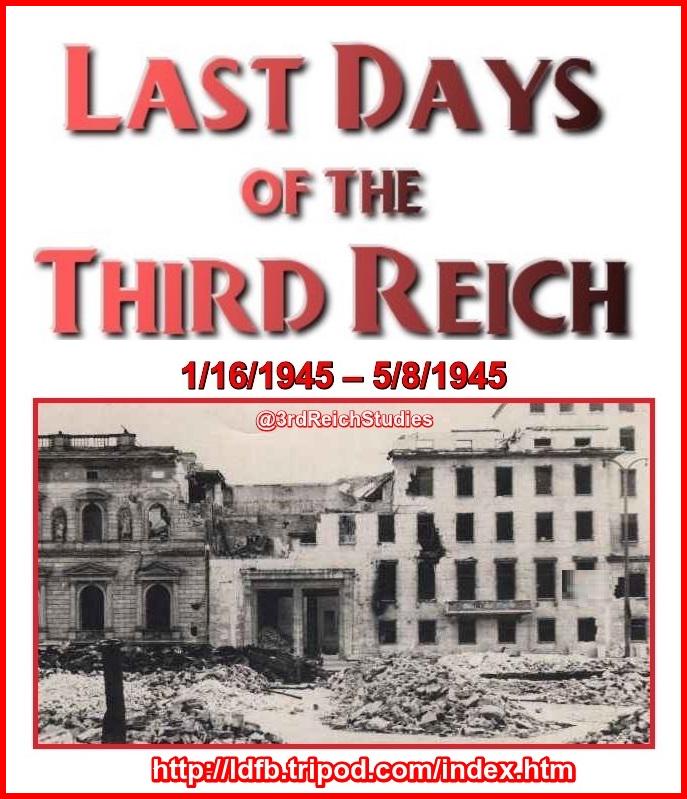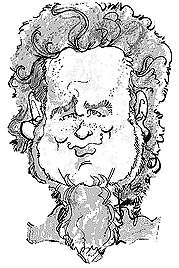(1 of 3)

From Kaltenbrunner's IMT testimony: I was born in 1903. My father and my grandfather were lawyers of repute; for the rest I am a descendant of farmers and scythe-makers. My mother is of modest descent. She was adopted by the Belgian Ambassador to Romania and lived there for 25 years. During my childhood, which I spent in the country with a family which took very good care of me, I enjoyed on the one hand the best education and on the other hand I became familiar with the life of the simple people.
January 26, 1910: The Convention Respecting the Laws and Customs of War on Land takes effect:October 21, 1918: From a proclamation of the German-Austrian deputies after the collapse of the Austro-Hungarian Monarchy:
November 12, 1918: From a resolution passed one day after the Armistice by the Provisional Austrian National Assembly:
November 12, 1918: The leader of the biggest national party of the time, Dr. Karl Renner, explains the reasons for the above resolution:
September 6, 1919: From a speech by Prelate Hauser, President of the Austrian Parliament, discussing reasons to accept the harsh conditions of the Peace Treaty of St. Germain:
September 10, 1919 Treaty of Saint-Germain-en-Laye: The new Republic of Austria signs the Treaty of Saint-Germain-en-Laye under tremendous pressure from the victorious Allies. The Austrian equivalent of the Treaty of Versailles, among its provisions are; the new republic's initial self-chosen name of German Austria (Deutschoesterreich) has to be changed to Austria; the new Republic of Austria, consisting of most of the German-speaking Alpine part of the former Austrian Empire, must recognize the independence of the newly-formed states of Hungary, Czechoslovakia, Poland, and the State of Slovenes, Croats and Serbs; must submit to 'war reparations'; must refrain from directly or indirectly compromising its independence, which means that Austria can not enter into political or economic union with Germany without the agreement of the council of the League of Nations; the Austrian Army is limited to a force of 30,000 volunteers. Note: The forcible incorporation of the German-speaking population of the border territories of the Sudetenland into the artificially-created state of Czechoslovakia will lead to the Munich Conference and become one of the causal factors of WW2.
1926: Kaltenbrunner obtains a doctorate in law at the State Realgymnasium's in Linz and Graz University.
From Kaltenbrunner's IMT testimony: I attended secondary school, high school, graduated, and in 1921 went to Graz University. First I studied chemical-technical sciences at the Institute of Technology and later on, when my father returned from the war seriously ill and when the possibility arose that I might have to take over his solicitor's practice, I studied law. I completed these studies with the degree of Doctor of Law and Political Science in 1926. I had a hard time. I had to earn my own living and the expenses for my studies. I had to work while I studied and for 2 years I worked as a coal miner during the night shift; and I have to thank my fate that thus I got to know the German workman much better than people usually do...After leaving the University I had to complete 7 or 8 years work as a candidate for the bar examination in accordance with the Austrian law, of which I spent one year in court as assistant and the rest of the time in lawyers' offices in Sandburg and Linz.
April 24, 1921: In a plebiscite in the Tyrol, 145,302 vote for the Anschluss, 1,805 against.May 18, 1921: In a plebiscite in the district of Salzburg, 98,546 vote for the Anschluss with 877 votes against.
1931: The SD, one of the oldest security organizations of the SS, is founded. First formed in 1931 as the Ic-Dienst by Heinrich Himmler, it will be renamed SD in 1932, when Himmler will appoint ex-navy officer, Reinhard Heydrich, to organize and run the small agency.
From the Affidavit of Dr. Wilhelm Hottl: Heydrich organized the so-called Sicherheitsdienst (known as the SD) in 1932. Its task was to give to the highest German authorities and the individual Reich ministries, information on all events at home and abroad. The SD was purely an information service and had no sort of executive authority. Only individual persons Belonging to the SD were drafted to the so-called special action commands (Einsatzkommandos) in the East. They thereby assumed executive positions, and they resigned from the SD during that period. There were special action groups and special action commands of the Security Police and the SD up to the last; also in Africa, and in Hungary, and Czechoslovakia even up to 1944. These Kommandos had nothing to do with executions. Their tasks had in the meantime assumed the nature of general security police matters. As far as I know, executions were carried out only in Russia, due to the so-called Commissar Order by Hitler. Whether these Kommandos stopped or continued their activity after Kaltenbrunner was named Chief of the RSHA, I do not know.
May 20, 1932: Engelbert Dollfuss becomes Chancellor of Austria.1932: Kaltenbrunner joins the Nazi Party.
From Kaltenbrunner's IMT testimony: I became a member of the Party in 1932 after I had belonged for several years to the Non-Partisan Movement for the Protection of the Austrian Homeland...I made speeches in my own home province, the Gau Upper Austria, at National Socialist but primarily—or rather exclusively—to promote the Anschluss movement. I was a legal adviser just as any other lawyer of any party who, at that period of economic emergency, was willing to give legal information and advice free of charge for some hours at the end of the day to the needy, who in this case were National Socialists...
Adolf Hitler, from Mein Kampf: German Austria must be restored to the great German motherland; and not, indeed, on any grounds of economic calculation whatsoever. No, no. Even if the union were a matter of economic indifference, and even if it were to be disadvantageous from the economic standpoint, still it ought to take place. People of the same blood should be in the same Reich. The German people will have no right to engage in a colonial policy until they shall have brought all their children together in one state. When the territory of the Reich embraces all the Germans and finds itself unable to assure them a livelihood, only then can the moral right arise from the need of the people, to acquire foreign territory. The plough is then the sword; and the tears of war will produce the daily bread for the generations to come. ....
To demand that the 1914 frontiers should be restored is a glaring political absurdity that is fraught with . such consequences as to make the claim itself appear criminal. The confines of the Reich as they existed in 1914 were thoroughly illogical because they were not really complete, in the sense of including all the members of the German nation. Nor were they reasonable, in view of the geographical exigencies of military defense. They were not the consequences of a political plan which had been well considered and carried out, but they were temporary frontiers established in virtue of a political struggle that had not been brought to a finish; and indeed, they were partly the chance result of circumstances.
March 8, 1933 Millimetternich: Dollfuss suspends freedom of the press and assumes dictatorial powers in Austria.
March 12, 1933: Seyss-Inquart joins the cabinet of Austrian Chancellor Engelbert Dollfuss.
April 26, 1933: Prussian Prime Minister Hermann Goering sets up the "Secret State Police Office."
August 1933: After exchanging Secret Letters with Mussolini, Italy on this day guarantees Austria's independence. To Mussolini, Austria forms a desirable buffer zone against Nazi Germany that is in Italy's interest to maintain. Dollfuss, for his part, stresses the similarity of Hitler's and Stalin's regime, and is convinced that Austrofascism under his reign and Italofascism under Mussolini can counter both national socialism and communism in Europe.
September 15, 1933: Austrian Chancellor Dollfuss, addressing the Austrian Fatherland Front, proposes a "Christian German state on Fascist lines," but without discrimination against Jews. He soon merges his Christian Social Party, the Nationalist paramilitary Home Guard (Heimwehr) and other nationalist and conservative groups to form the Vaterlaendische Front.
October 3, 1933: An assassination attempt is made against Dollfuss.
December 15, 1933: Catholic leaders encourage Austrians to do their Christmas shopping in non-Jewish stores.
February 12-15, 1934: Civil war breaks out in Austria in protest of Dollfuss's regime.
1934: Kaltenbrunner weds Elisabeth Eder; the couple will have three children. In addition, Kaltenbrunner will father twins in 1945 with his long-time mistress Gisela Graefin von Westarp (née Wolf). All of his children will survive the war.
May 1, 1934: A new Austrian constitution is approved that makes all the decrees Dollfuss has already passed since March 1933 'legal.' The new constitution sweeps away the last remains of democracy.
July 25, 1934: Austrian Chancellor Dollfuss is murdered by eight Austrian Nazis. A coup d'état fails, however, and order is soon restored. Kurt Alois Josef Johann Schuschnigg becomes Austria's new federal chancellor. At the age of 36, he is the youngest person to have ever held the position.
July 26, 1934: Von Papen is sent to Vienna as Minister to Austria.
November 8, 1934: From a speech by Hitler:
May 1935: Kaltenbrunner becomes the leader of the Austrian SS. Soon after, Kaltenbrunner is jailed by the Dollfuss Government and sent with other leading National Socialists into the concentration camp Kaisersteinbruch for a six month stay.
From Kaltenbrunner's IMT testimony: The Government was in the hands of a group of men who had very few followers among the people. There were two large groups of size which did not participate in the Government; the first being the leftist group, that is, the Social Democrats and Austro-Marxists, and the second being the National Socialists, which was at that time a very small group. The Government, then, did put not only the National Socialists but also Social Democrats and Communists into their detention camps in order to eliminate any political strife originating from meetings or demonstrations. I was one of those National Socialists who were arrested at that time, whose number was approximately 1,800. ....
I was arrested in May 1935. I should say first of all that in the meantime the National Socialist attempt at revolt had taken place in Austria in July 1934. This attempt at revolt, which unfortunately also included the murder of Dollfuss, was defeated and avenged by most severe measures against a large number of National Socialists. One particularly severe measure was the law by which many thousands of National Socialists lost their jobs or professional license and the necessity arose to bring about a pacification, I should say a mitigation in principles of the Government policy. That was primarily done by two men: Langot, then the Chief Deputy of Upper Austria, and Reinthaller, a farmer and engineer. That appeasement action started at the end of 1934 in September or October, and I was invited to join that action. ....
In May 1935 I was arrested, suspected of establishing an illegal connection with the SS and of being engaged in high treason activity. I remained in custody for 6 months and was arraigned before the military tribunal in Wels on a charge of high treason. I was, however, acquitted of this crime since the Government themselves admitted that this assignment had been granted to me with their knowledge. All that was left over was a minor sentence for conspiracy which, however, was served by my custody. ....
I was in no way implicated in this attempted revolt of July 1934 and that is why I was invited to join in that appeasement action. Within that program the Government themselves demanded that certain men should maintain connections with the Party leaders, with the SA, SS, and all organizations of the then forbidden movement. With the knowledge and consent of the Government and the proper police departments, I took up the connection with the SS.
July 11, 1936: The Berchtesgaden Agreement regarding the maintenance of Austrian sovereignty is negotiated between von Papen and Austrian Chancellor Schuschnigg.
January 3, 1937: Hitler speaks before the Reichstag:
My views concerning these problems can perhaps be most suitably stated by referring to the statements recently made by Mr. Eden in the House of Commons. I should like to express my sincere thanks for the opportunity of making a reply offered me by the frank and notable statement of the British Foreign Minister. I shall first try to correct what seems to me a most regrettable error--namely, that Germany never had any intention of isolating herself, of passing by the events of the rest of the world without sharing them, or that she does not want to pay any consideration to general necessities. I should like to assure Mr. Eden that we Germans do not in the least want to be isolated and that we do not feel at all that we are isolated. Our relations with most States are normal, and are very friendly with quite a number. I only call your attention to our agreement with Poland, our agreement with Austria...
May 1, 1937: Hitler's Germany is outraged when an Austrian official in the small hamlet of Pinkafeld hauls down a flag of the German Reich.
July 1937: Buchenwald concentration camp is established near Weimar, Germany; one of the largest and first camps on German soil..
January 20, 1938: Hitler speaks in the Reichstag.
January 25, 1938: New provisions for protective custody are issued in Germany allowing the Gestapo to arrest persons "who by their conduct pose a threat to the continued existence and security of the people and the state."
From Kaltenbrunner's IMT testimony: I must say that not once in my whole life did I ever see or sign a single protective custody order. During the interrogations before the Trial a number of protective custody orders which bear my name were put before me when I was being questioned. Every one of these protective custody orders had this signature, that is, my name, either typewritten or in teletype, and I think in one or two cases it was a facsimile...this signature 'Kaltenbrunner' on protective custody orders can only have come about through the fact that the office chief, Muller, signed the name of the Chief of the Reich Security Main Office on these protective custody orders, as he had done during Heydrich's time when he was avowed to do so, and that in addition he instructed his sections, for instance, the protective custody section.
Accordingly quite obviously he continued to do so during my time, because otherwise these orders could not have been put before me now. But he has never informed me of this and he never had authority from me to do this. To the contrary, this was out of the question and, on the other hand, superfluous, because he was immediately under Himmler and he had authority from Himmler, so that he just as well might have written 'Himmler' or 'By order of Himmler' or 'For Himmler.' I admit that this remains a fact about which the Tribunal will not believe me, but nevertheless it was so and Himmler never gave me cause to define my attitude in this respect, since he had told me that I was not to carry out these executive tasks. ....
I discussed the concept 'protective custody' with Himmler as early as 1942. But I think even before that, already on two occasions in detail, I have had correspondence about this concept once with him and once with Thierack; I consider protective custody as it was handled in the German Reich as being a necessity in the interests of the State, or rather a measure which was justified by the war, only in a small number of cases.
Apart from that, I have declared myself against and protested against this concept and against the application of any protective custody as a matter of principle, and have often used profound legal historical arguments as reasons. On several occasions I had reported on that subject to Himmler and also to Hitler. I have, in a meeting of public prosecutors--I think it was in 1944--publicly voiced my views against it, since I have always been of the opinion that a man's liberty must be counted among his highest privileges and that only a judgment of a court, firmly rooted in a constitution, should be allowed to infringe on that liberty or to deprive him of it. ....
I consider these reasons for protective custody to be wrong. I think I had better explain in detail. My attitude is due to the fact that all the offenses which have been enumerated here might just as well have been dealt with by due process of law in the state courts. For that reason I consider protective custody as such to be wrong, and more so if ordered for the reasons mentioned.
February 11, 1938 From the Diary of Alfred Jodl:
February 12, 1938: The Austro-German Crisis begins as Hitler meets with Austrian Chancellor Kurt Schuschnigg at Berchtesgaden. The German Fuehrer demands that Schuschnigg lift the ban on political parties, reinstate full party freedoms, release all imprisoned members of the Nazi party and allow them to participate in the government.
February 13, 1938 From Jodl's Diary:
February 14, 1938 Jodl's Diary:
February 16, 1938: Schuschnigg complies with Hitler's demands by appointing Arthur Seyss-Inquart as Interior Minister and another Nazi, Edmund Glaise-Horstenau, as a Minister without Portfolio.
From Kaltenbrunner's testimony before the IMT: Shortly after my activities in connection with the Reinthaller-Langot appeasement action, I got in touch first with circles of the Anschluss movement clubs and second with those circles whose aim it was to improve conditions in Austria peacefully, by an evolutionary movement and development, and, on the other hand, to enlarge the Anschluss movement so as to win over the government themselves to that idea. In 1937 and 1938 I attempted to come into closer personal contact with Seyss-Inquart, later Minister, and I completely adopted his political conceptions.
February 19, 1938: Schuschnigg's government extends full amnesty to imprisoned National Socialists and gives the National Socialists access to the Fatherland Front.February 20, 1938: In a speech aimed specifically at Czechoslovakia, Chancellor Adolf Hitler proclaims that the German government vows to protect German minorities outside of the Reich.
February 20, 1938: British Foreign Secretary Anthony Eden resigns in protest of Chamberlain's policy of appeasement with Italy and Germany.
February 24, 1938: Austrian Chancellor Kurt Schuschnigg, in response to an earlier speech by German Chancellor Adolf Hitler; calls for international support to resist future German demands for Austrian concessions; reaffirms the independence of Austria; promises to protect the ten million Germans living outside of the Reich.
February 28, 1938: Hitler recalls Von Papen to Berlin.
March 3-9, 1938: In anticipation of Hitler's impending move into Austria, the German Chancellor begins an official state visit to Rome to soften Mussolini up.
March 9, 1938: Austrian Chancellor Schuschnigg schedules a plebiscite on the independence of Austria for 13 March. The question is to be: "Are you for an independent and social, a Christian, German and united Austria?"
From von Papen's IMT testimony: The plebiscite announced by Herr Schuschnigg was, of course, a complete surprise. In my view it was contrary to the spirit of the arrangements agreed upon at Berchtesgaden and contrary to the tendency of a peaceful settlement of the tension. The plebiscite was a violation of the Austrian Constitution, too. It was not a decision of the Austrian Government but was a spontaneous measure of the Austrian Chancellor, and in my opinion it was quite evident that those elements in Austria who were in favor of a union of the two States were most displeased with this plebiscite.
March 10, 1938 Jodl's Diary:He drives to the Reichskanzlei at 10 o'clock. I follow at 10:15, according to the wish of General v. Viebahn, to give him the old draft. Prepare case Otto. 1300 hours: General K informs Chief of Operational Staff (and) Admiral Canaris. Ribbentrop is being detained in London. Neurath takes over the Foreign Office. Fuehrer wants to transmit ultimatum to the Austrian Cabinet. A personal letter is dispatched to Mussolini and the reasons are developed which force the Fuehrer to take action. 1830 hours: Mobilization order is given to the Command of the 8th Army (Corps Area 3) 7th and 13th Army Corps; without reserve Army.
March 11, 1938: From Austrian Chancellor Schuschnigg's farewell speech:
March 11, 1938 The Anschluss: Kaltenbrunner, whose SS had been a decisive factor, is appointed State Secretary for Security Matters in the new National Socialist Cabinet of Dr. Seyss-Inquart.
From Kaltenbrunner's IMT testimony: In March 1938 I became a member of the Austrian Government; that is, I had to take over the position of State Secretary for Security m Austria, which was under the Ministry of the Interior. That Austrian Government was dissolved in 1941; that is to say, their activity was discontinued in favor of such bodies of administration which prevailed in the Reich; consequently, the Office of State Secretary for Security was also dissolved, and in order to retain me at the same level in the budget, I was appointed Higher SS and Police Leader, I think in July 1941. ....
The Prosecution charge that I had led the Security Police already in Austria. In that respect the Prosecution are mistaken. The State Police and the Criminal Police as well as the Security Service in Austria were directed centrally from Berlin and were completely removed from the power of Seyss-Inquart, then the responsible Minister, and his deputy, Kaltenbrunner. My activity as Higher SS and Police Leader in Austria-unlike the activity of the same men in the Reich-was therefore limited merely to the task of representing or leading the General SS, which in no way took up all my time.
During these 2 years I therefore followed out my intentions concerning political activity and developed a rather large political intelligence service radiating from Austria toward the southeast. I did that because, in the first place, I regretted that the Reich did not make use of at least the political and the economic resources, of all the resources which Austria could have put at the disposal of the Reich, and because the Reich with unequalled shortsightedness did not fall back upon Austria's most significant mission as an intermediary with the Southeast. Thus, my reports met with increased interest in Berlin, and since Himmler was continuously reproached by Hitler that his intelligence service, which was run by Heydrich in the Reich, did not furnish adequate reports on political results, Himmler, 8 months after Heydrich's death, felt obliged to look for a man who could free him from Hitler's reproaches that he had no intelligence service worth mentioning.
March 12, 1938 Anschluss: Seyss-Inquart "invites" German troops to occupy Austria.
March 25, 1938: Hitler speaks in Koenigsberg:
April 7, 1938: Seyss-Inquart speaks in Berlin:
April 8, 1938: Seyss-Inquart meets with Hitler.
April 10, 1938 Annexionvolksabstimmung: In a national plebiscite, Austrian voters register 99.75% in favor of union with Germany: Austria becomes part of the Reich as a new state, divided into seven Gaue (states). Austria withdraws as a member state from the League of Nations because of the republic's incorporation into Germany.
From Kaltenbrunner's IMT testimony: The plebiscite of 10 April 1938 was completely in accordance with the will of the Austrian population. The result of 99.73 percent for Anschluss to the German Reich was perfectly genuine...The representation and opinion of the Prosecution are completely incorrect when they think that National Socialism in Austria at that time could in any way be compared with the development which had already taken place in Germany. The development of Austrian National Socialism was on the contrary completely different.
The starting point was the abnormal economic depression in Austria and beyond that the Anschluss movement, and finally National Socialism made the Anschluss come true. This course, from economic depression via Anschluss movement to National Socialism, was the road of nearly all National Socialists, and the ideology of the Party program of the time was in no way responsible. I believe this has to be taken for granted and I believe I also ought to say it first, that the Anschluss movement in Austria was backed by the people; the fact that the plebiscite in the various provinces, like the Tyrol or Salzburg, had already in previous years -I believe from 1925 to 1928-shown a result of more than 90 percent of the votes in favor of the Anschluss should now be taken into consideration. Back in 1928 the National Council of Austria and the Austrian Federal Council signed the decree of the National Council of the year 1918 which said that both these assemblies had resolved to join the Reich; and they did not swerve from that resolution.
August 7, 1938: Prisoners from Dachau concentration camp are sent to the town of Mauthausen near Linz, Austria, to begin the construction of a new camp.
August 24, 1938: From notes, signed by Jodl:
The purpose of these statements is to show how greatly interested the Armed Forces are in the incident, and that they should know well in advance the intentions of the Fuehrer, inasmuch as the organization of the incident will be entrusted, in any case, to the Abwehr.
September 11, 1938: Kaltenbrunner is promoted to SS Gruppenfuehrer.
From Kaltenbrunner's IMT testimony: After the ensuing Anschluss I had to take over the leadership of the General SS in Austria, namely, the SS Main Sector Danube. At that time I had been promoted to brigade leader without going exactly through the preceding ranks of SS leaders. And I think it was in September that I was appointed Gruppenfuehrer, so that my rank was made the same as that of all the other main SS sector leaders in the entire Reich.
November 11, 1938: From a letter from Heydrich to Goering:February 10 , 1939: Pope Pius XI dies.
From the Affidavit of Dr. Wilhelm Hottl: As adviser on Vatican matters, I often had the opportunity of speaking to him (Kaltenbrunner) officially on this subject. He immediately supported my suggestion, made to Hitler in the spring of 1943, that a change in church policy should be effected so that the Vatican could be won over as a peace negotiator on this basis. Kaltenbrunner had no success with Hitler, as Himmler opposed him violently. Baron von Weizsacker, German Ambassador to the Holy See with whom I discussed the matter, failed likewise in his efforts, the result of which was that Bormann had an eye kept on him.
May 8, 1939: Mauthausen becomes a labor camp used mainly for the incarceration of political prisoners.From the Affidavit of Dr. Wilhelm Hottl: The SS Main Office for Economy and Administration had sole charge of the concentration camps; that is, not the RSHA, and therefore not Kaltenbrunner. He, consequently, had no power to give orders and no competency in this sphere. According to my opinion of him as a man, Kaltenbrunner certainly did not approve of the atrocities committed in the concentration camps. I do not know whether he knew about them.
From the affidavit of Adolf Zutter, the former adjutant of Mauthausen Concentration Camp: Standartenfuehrer Ziereis, the commander of Camp Mauthausen, gave me a large number of execution orders after opening the secret mail, because I was the adjutant and I had to deliver these to Obersturmfuehrer Schulz. These orders of execution were written approximately in the following form. ....
Orders for execution also came without the name of the court of justice. Until the assassination of Heydrich, these orders were signed by him or by his competent deputy. Later on the orders were signed by Kaltenbrunner, but mostly they were signed by his deputy, Gruppenfuehrer Muller. Dr. Kaltenbrunner, who signed the above-mentioned orders, had the rank of SS general-Obergruppenfuehrer-and was the Chief of the Reich Security Main Office. Dr. Kaltenbrunner is about 40 years old, height about 1.76 to 1.80 meters, and has deep fencing scars on his face. When Dr. Kaltenbrunner was only a Higher SS and Police Leader in Vienna, he visited the camp several times; later on as the Chief of Reich Security Main Office (RSHA) he visited the camp, too, though this occurred much less frequently.
During these visits, the commander usually received him outside the building of the camp headquarters and reported. Concerning the American military mission, which landed behind the German front in the Slovakian or Hungarian area in January 1945, I remember when these persons were brought to Camp Mauthausen. I suppose the number of the arrivals was about 12 to 15 men. They wore a uniform, which was American or Canadian, brown-green color shirt and tunic and cloth cap. Eight or 10 days after their arrival the execution order came in by telegraph or teletype. Standartenfuehrer Ziereis came to me into my office and told me, "Now Kaltenbrunner has given the permission for the execution." This letter was secret and had the signature signed, Kaltenbrunner. Then these people were shot according to martial law and their belongings were given to me by Oberscharfuehrer Niedermeyer.
From the IMT testimony of Alois Hollriegel (Unterscharfuehrer at Mauthausen): I was until the winter of 1942 with a guard company, and I stood guard (at Mauthausen). From 1942 until the end of the war I was detailed to the inner service of the concentration camp. I remember, it was in 1941. At that time I was with a guard company on the tower which closed off the area of the Wiener-Graben quarry (which adjoined Mauthausen). I was able to observe in the morning about six to eight prisoners who came with two SS men. One was Hauptscharfuehrer Spatzenocker and the other, Unterscharfuehrer Edenhofer; they moved about and made strange gestures.
I saw that they were approaching the precipice (I estimate it to be 30 to 40 meters) near the quarry. I saw from my watchtower that these two SS men were beating the prisoners and I realized immediately that they intended to force them to throw themselves over the precipice or else to push them over. I noticed how one of the prisoners was kicked while lying on the ground, and the gestures showed that he was supposed to throw himself down the precipice. This the prisoner promptly did under the pressure of the blows--presumably in despair...in Mauthausen Camp they were called paratroopers.





Twitter: @3rdReichStudies




>
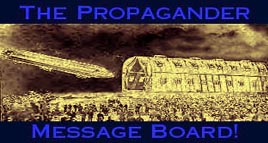

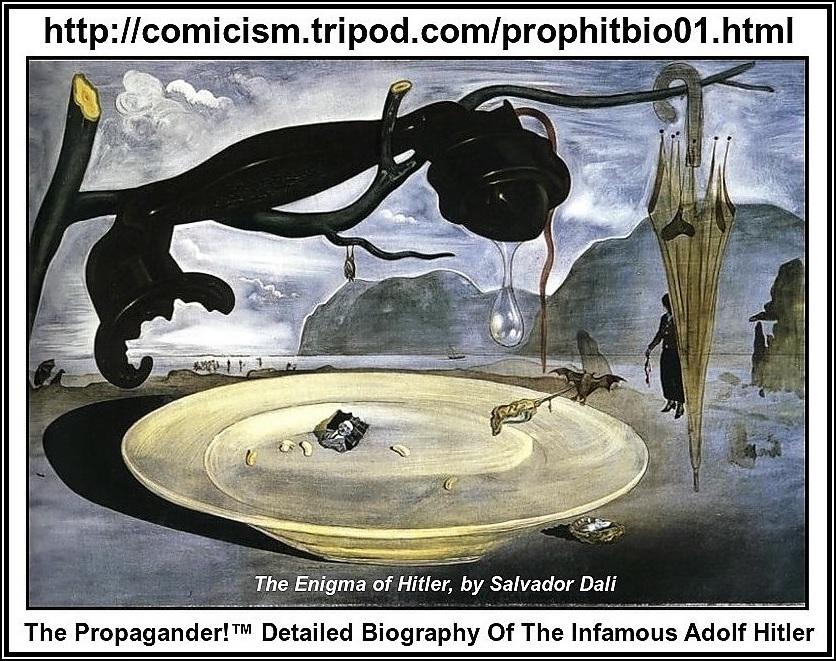

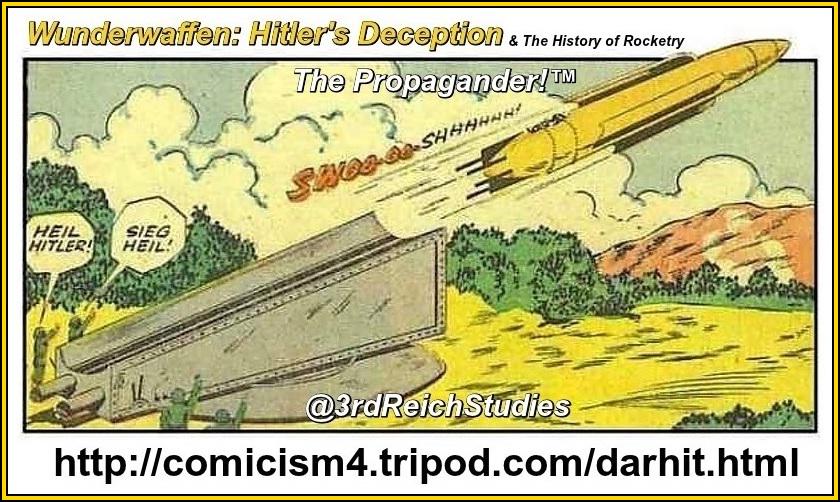
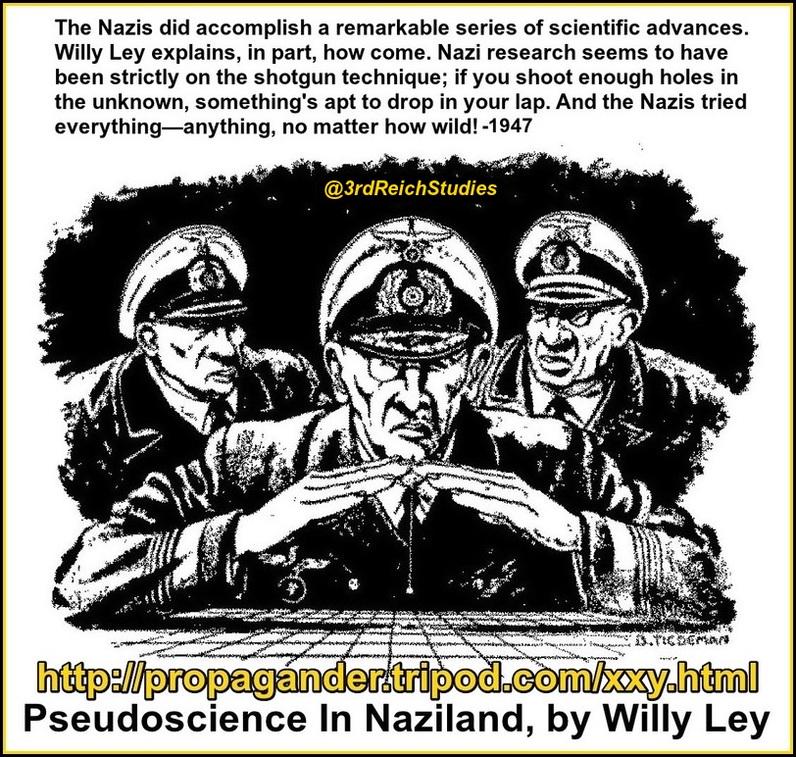
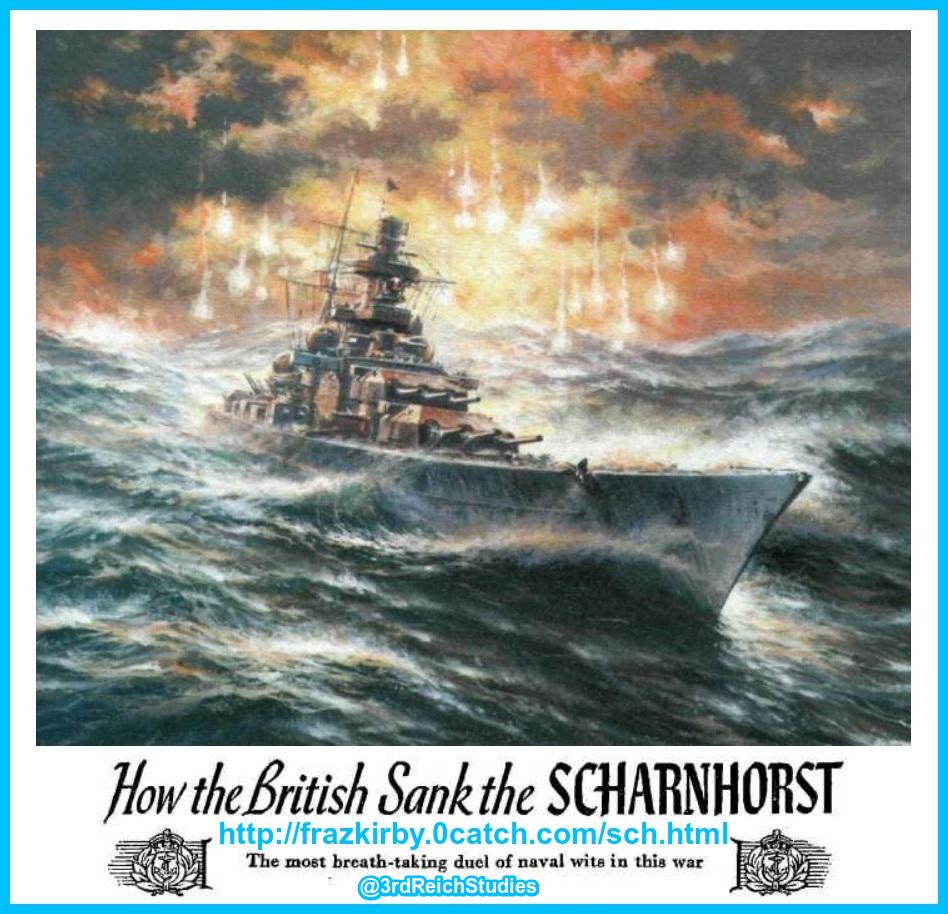


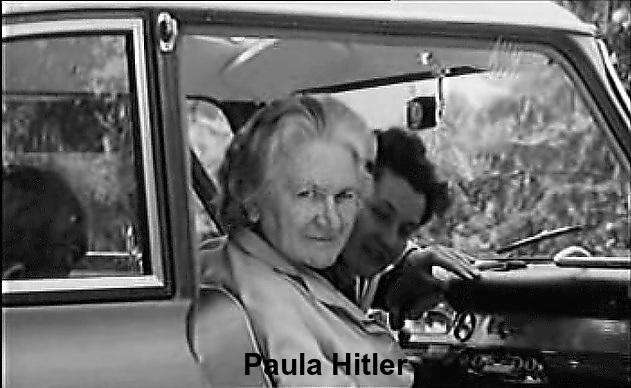
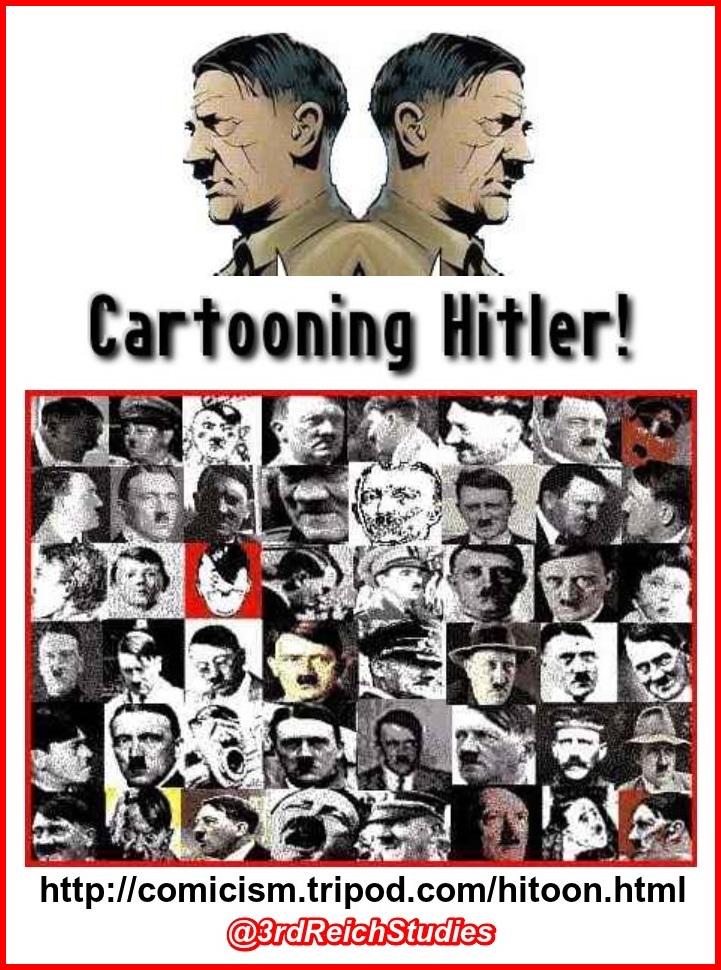


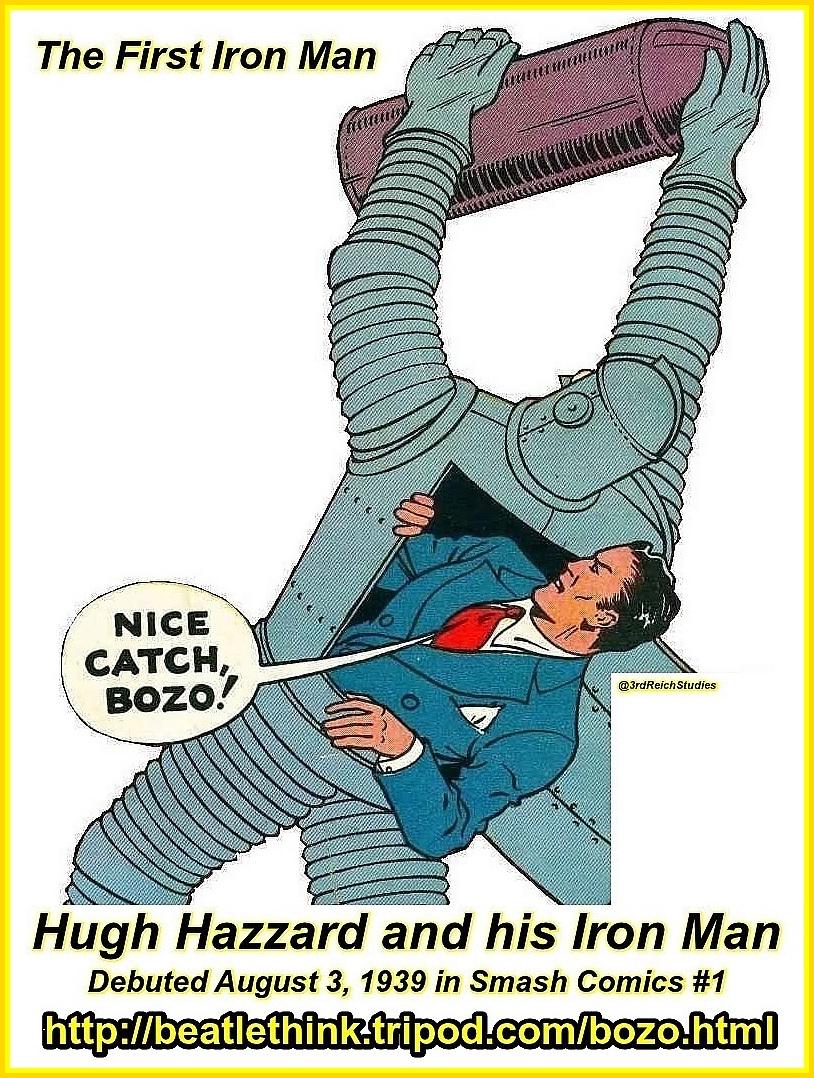
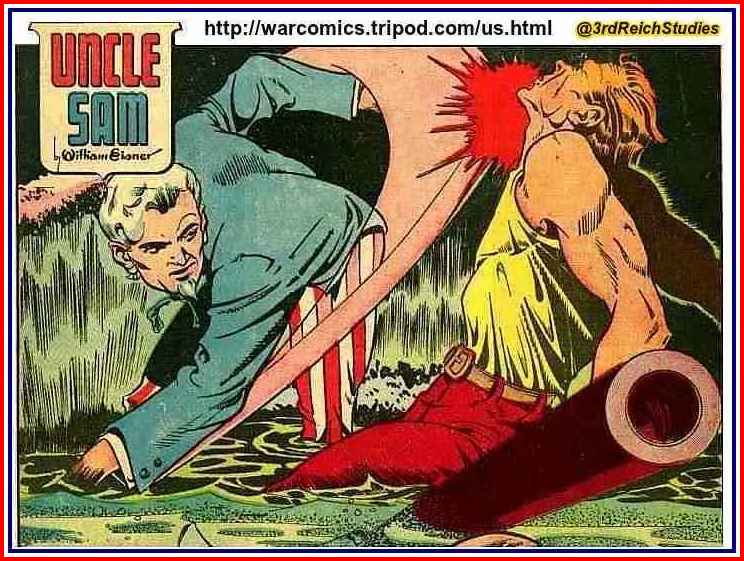
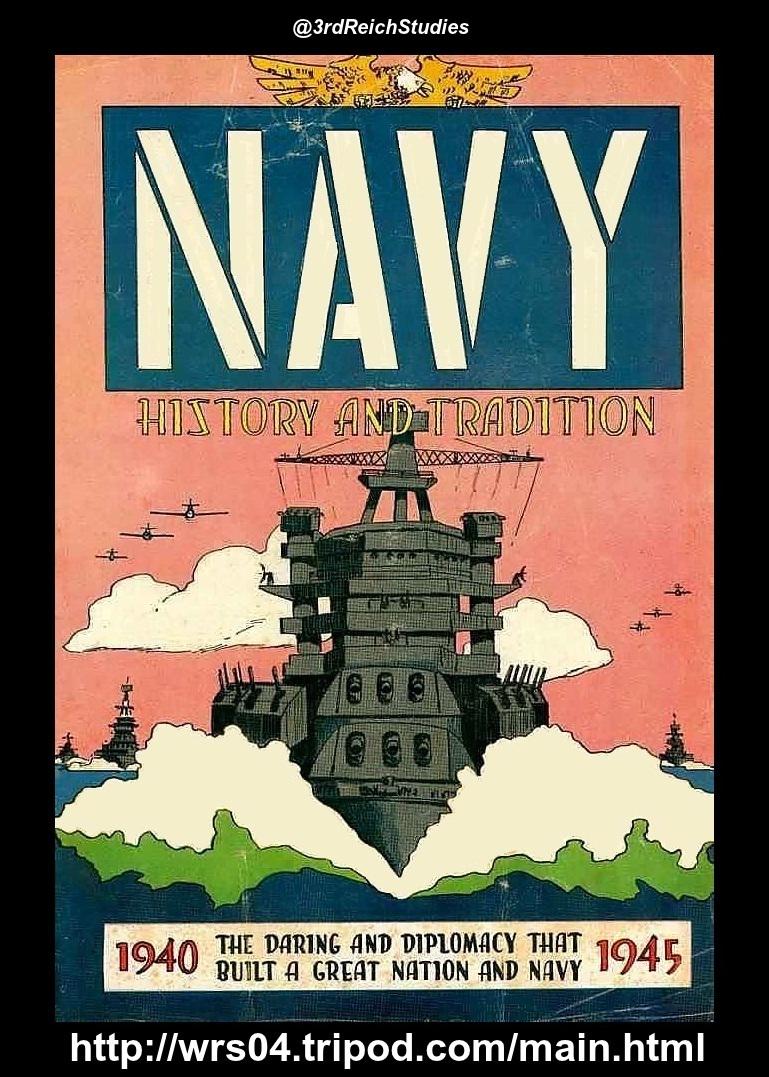
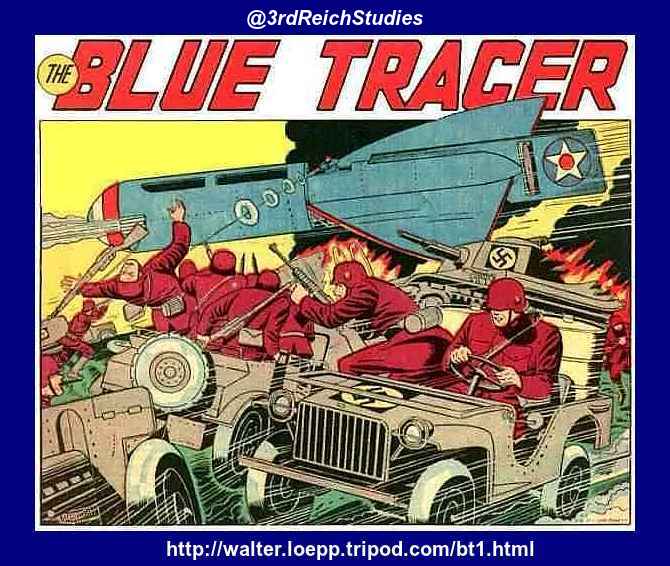

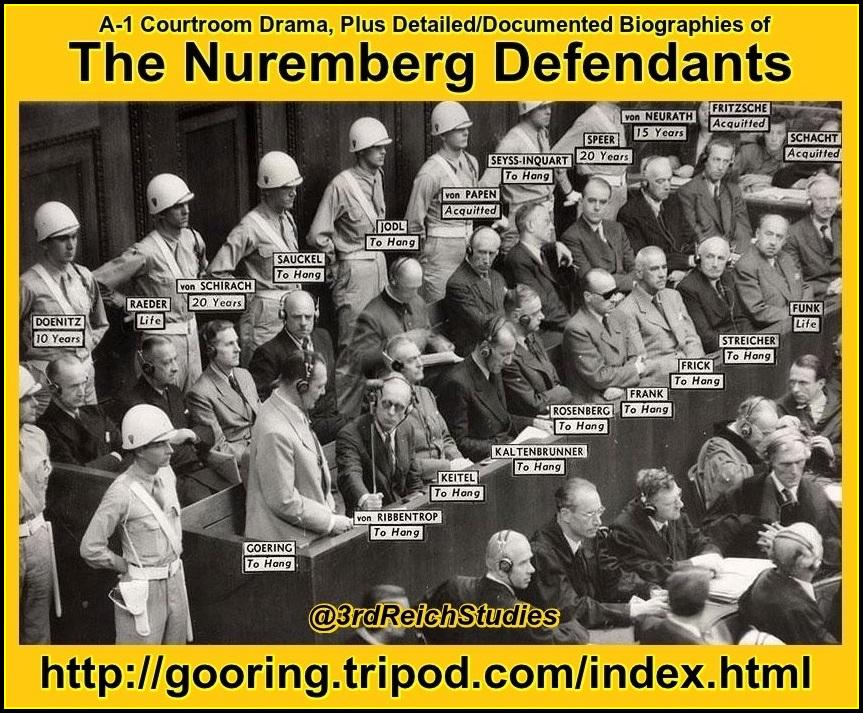
Disclaimer: The Propagander!™ includes diverse and controversial materials--such as excerpts from the writings of racists and anti-Semites--so that its readers can learn the nature and extent of hate and anti-Semitic discourse. It is our sincere belief that only the informed citizen can prevail over the ignorance of Racialist "thought." Far from approving these writings, The Propagander!™ condemns racism in all of its forms and manifestations.
Fair Use Notice: The Propagander!™may contain copyrighted material the use of which has not always been specifically authorized by the copyright owner. We are making such material available in our efforts to advance understanding of historical, political, human rights, economic, democracy, scientific, environmental, and social justice issues, etc. We believe this constitutes a "fair use" of any such copyrighted material as provided for in section 107 of the US Copyright Law. In accordance with Title 17 U.S.C. Section 107, the material on this site is distributed without profit to those who have expressed a prior interest in receiving the included information for research and educational purposes. If you wish to use copyrighted material from this site for purposes of your own that go beyond 'fair use', you must obtain permission from the copyright owner.

